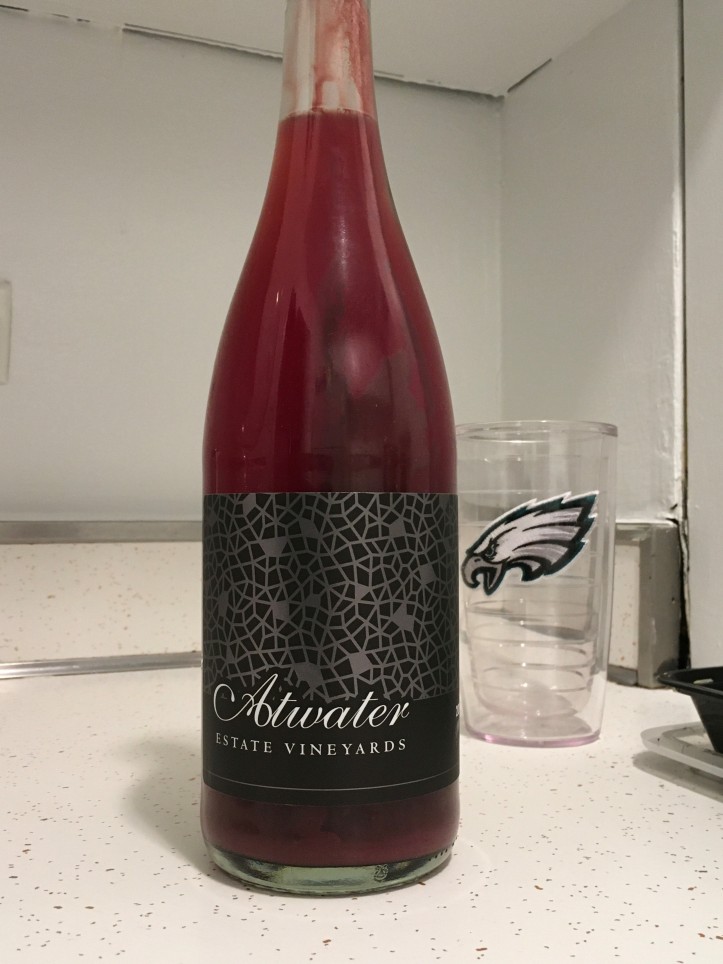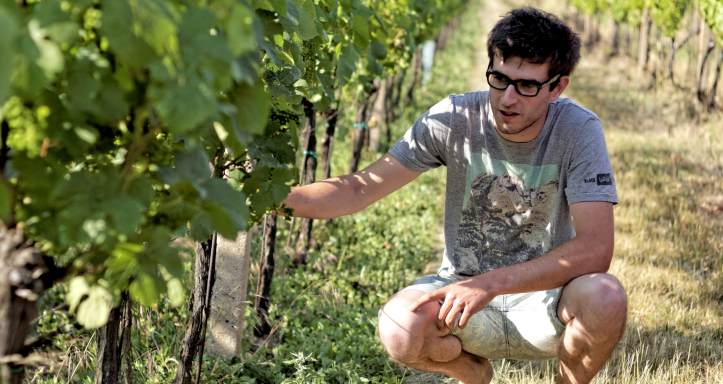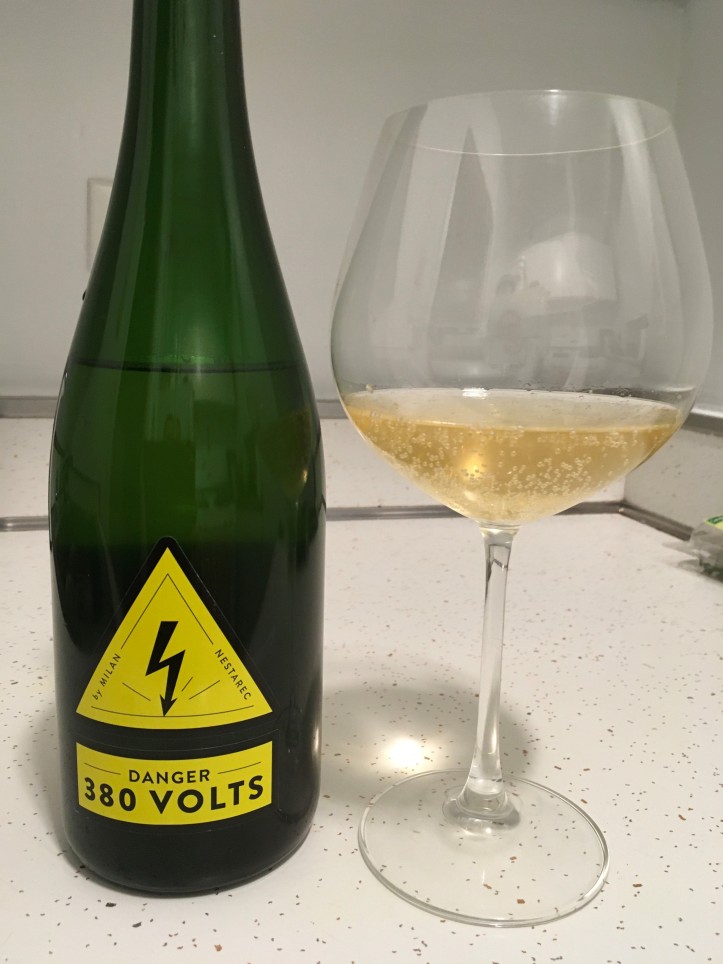
It’s no surprise that the Wine Pairing Weekend folks selected sparkling wine as their featured topic for December. After all, what’s more natural than a glass of bubbles to celebrate the holidays? We are mixing it up a little, though, by focusing on a particular type of wine known as Pétillant-Naturel, or Pét-Nat, as the cool kids like to call it.
Our host, Cindy, from Grape Experiences provides excellent background on Pét-Nat and how it’s made in her invitation post. Give it a read and then join our live Tweet-up this Saturday, December 14th, at 11 am ET. All you do is follow #WinePW and make sure to add the hashtag to your tweets and responses. Hope to see you there!
The rest of the #WinePW gang will be chiming in with their notes and pairings. Here’s a preview of what we’ll be dishing about:
Deanna from Asian Test Kitchen explores “Pet Nat Food Pairings Made Easy with Gilbert Wines”
Linda from My Full Wine Glass shares “A Fresh, Fruity Zweigelt Pet-Nat Perfect for Fish”
Jane of Always Ravenous discovers that she enjoys “Tasting and Pairing Pet-Nat Sparkling Wine”
Susannah at Avvinare shares “Blanquette de Limoux Paired with Salmon over Orzo”
Camilla from Culinary Adventures with Camilla shares “Unexpected Pairings for a Pet-Nat Duo from Donkey & Goat: Coconut Beef Curry and Holiday Cookies”
Gwendolyn from Wine Predator pairs “2 Biodynamic Loire Pet Nats: Free Mousse and Bulle Nature #WinePW”
Nicole from Somm’s Table has an “Around the World Pet Nat Party”
Lauren from The Swirling Dervish explains “Pairings for Pet-Nat from Near (NY) and Far (Czech Republic)”
Cindy from Grape Experiences share “Soalheiro Espumante Bruto Nature 2016: A Versatile, Complex Pét-Nat of Alvarinho”
I’ve Heard the Buzz about Pét-Nat – What Is It?
Imagine the last sparkling wine you drank. Now imagine it just a little less effervescent, with a little less alcohol, and (maybe) just a hint more sugar on the palate. Generally speaking, that’s Pét-Nat.
It is made according to the Ancestral Method (believed to be the original process for creating sparkling wine) in which the wine is bottled before all of its sugar has been fermented into alcohol. Fermentation continues in the bottle, producing more alcohol and carbon dioxide (which makes the bubbles) until the desired levels of sweetness and alcohol by volume have been attained.


Unlike the traditional method of sparkling wine production used in Champagne, the ancestral process doesn’t include disgorgement (whereby spent yeast cells are expelled from the bottle before corking.) Pét-Nat wines tend not to undergo fining or filtration, meaning they retain the yeasty sediment and may seem cloudy.
Fans of the natural wine movement love Pét-Nat because they see it as a low-intervention wine. Many producers practice sustainable (or perhaps even organic or biodynamic) principles and shy away from the use of sulfur as a preservative. Wine comes to the consumer in its natural state, without any gussying-up in the winery.
While any conversation about natural wine will attract strident voices on all sides of the issue, most wine lovers agree that Pét-Nat is a pleasing addition to any wine list.
A Tale of Two Chilis
I was really excited for this month’s #WinwePW event because, while I’ve studied sparkling wines in-depth, I haven’t tasted many Pét-Nats outside of an academic setting. That means I’ve never sat down and just slurped one for enjoyment.
After tracking down two Pét-Nats, I drank (yes, drank!) them with two different chili recipes: a chicken version with cannellini beans and green chilis, and a turkey and black bean version. Very different flavor and spice profiles to go up against two completely different styles of wine.
Here’s how it worked out:
2017 Atwater Estate Vineyards Rosé of Blaufränkisch Pét-Nat (12% abv; $27.99 retail)
Atwater Estate Vineyards occupy 80 acres on the shores of Seneca Lake in the Finger Lakes region in upstate New York. Farmed continuously since the early 1900s, current plantings include 16 different grapes, 82% of which are vinifera varieties. The balance are French-American hybrids with a long history in this cool-climate zone.
In fact, the modifying effects of the lake (which, at 600 feet deep, retains enough heat to stave off the worst of winter conditions) and its morainic soils create a microclimate separate and distinct from the rest of the Finger Lakes, allowing a wider range of grapes to be grown and styles of wine to be made.
Blaufränkisch is planted on just one acre at the Atwater Estate and finds its way into several wines: a varietal red wine, a still rosé, and the Pét-Nat rosé, which I tried. With only 20 cases of the Pét-Nat produced, I was shocked to come across a bottle in a local New York City wine shop. (More on that in an upcoming post!)

Tasting Note: Medium purple in color, with fruity aromas of black cherry, blackberry, and plum, this wine was a party in a glass. Delicious fresh fruit flavors are enhanced by moderate acidity and soft perlage. Both tannins and alcohol were low, leaving just a crush of ripe fruit on the finish. As a novice taster of Pét-Nat style wines, I’d describe this one as a lively cross between a simple Gamay and tart dry cider.
And the pairings?

An able partner with both chili recipes, I preferred it with the turkey and black bean version. It was spicier and had a hint of sweetness thanks to the addition of chopped prunes (don’t scoff – they dissolve into the sauce, adding a hint of syrupy dried fruit flavor.) Definitely one to try with dishes that can sometimes be tricky with wine.
2017 Milan Nestarec Danger 380 Volts Pét-Nat (11% abv; $35 retail)
Milan Nestarec, from the Czech Republic, specializes in crafting low-intervention wines made from grapes his father planted in 2001. Comprising 8 hectares in total, the family’s holdings are farmed organically (no herbicides) and yields are low (30 hl/ha). The winery uses indigenous yeast only, and ferments all wines in large oak or acacia wood barrels.

This wine is a blend of Müller-Thurgau (70%), Neuberger (20%), and Muscat (10%) and the average age of the vines is 17 years. Fermentation begins in 600-litre neutral oak barrels (two months total); the wine is then bottled and fermentation continues for another two months. No sulfur is used, and the wine is not filtered.
Here is how Nestarec explains his winemaking philosophy:
We are persuaded that natural methods of wine-growing and fermentation of grapes leads to the best results. Winemaking is a craft which requires deep moral commitment. There is no place for falseness and every defect has consequences which we need to deal with afterwards. This work gives us the understanding of what nature is, and if we cannot listen and respect it we end up working against ourselves. “

Tasting Note: Medium gold color with an intriguing nose of ripe pear, honeysuckle, lemon, and orange peel. On the palate this wine blazes across your tongue like a razor! High acidity and barely-there sweetness perform a daring high-wire act that first offers luscious white fruit and flowers and then – POW! – scrubs the taste buds clean. It’s named Danger for a reason, as the back label of the bottle explains:
“Warning! This is dangerously drinkable wine!”

Normally I’d raise an eyebrow at such a lofty self-description; after having tasted it, I’d say it was spot-on. I’m still thinking about this wine, trying in vain to come up with adjectives that do it justice. I might need to get another bottle – to complete my research, of course!
As for the pairings, the Danger 380 Volts worked well with both chili recipes. It was, however, brilliant with the chicken and white bean version, cutting through the richness (and the yummy cheese topping) with ease, tempting me to ditch the dish in favor of another glass of wine.

I’ve been craving confit de canard (duck confit) lately, and I think this might be the perfect partner to serve alongside it. I’ll let you know how it works out!
Cheers to Pét-Nat!
Those are gorgeous wines! I would definitely describe the ones I tried as ‘gulpable’, too. Delicious and dangerous. Thanks for joining the party.
LikeLiked by 1 person
Those are gorgeous wines! I would definitely describe the ones I tried as ‘gulpable’, too. Delicious and dangerous. Thanks for joining the party.
LikeLiked by 1 person
These wines really opened my eyes to the wonders of Pet-Nat. Can’t wait to try some more!
LikeLike
How fun to try a wine from the Czech Republic and an EZ drinking pet nat at that!
LikeLiked by 1 person
I got lucky at a local NYC wine shop. Their focus is natural wines and these two came highly recommended. Looking forward to going back to see what else they have!
LikeLiked by 1 person
NOTHING LIKE NYC!
LikeLiked by 1 person
I love the selection of pet nats you explored along with the pairings of a red and white chili. Such a suitable pairing for fun, fresh bubbles with the creamy thick chili!
LikeLiked by 1 person
Thank you! I was so impressed with the pairing ability of Pet-Nat. Can’t wait to taste more of it and try new dishes. Stay tuned!
LikeLike
[…] Lauren from The Swirling Dervish explains “Pairings for Pet-Nat from Near (NY) and Far (Czech Republic)” […]
LikeLike
Mmmmmmm! These both sound delicious as do the chili pairings. I love Blaufrankish, so the Atwater bottle is definitely calling to me, but then the Nestarec sounds like so much fun too!
LikeLiked by 1 person
Both were fun ways to learn about Pet-Nat. They were very different – totally opposite personalities but delicious in their own ways. I am looking forward to trying more of them soon!
LikeLike
[…] Lauren from The Swirling Dervish explains “Pairings for Pet-Nat from Near (NY) and Far (Czech Republic)” […]
LikeLike
The greatness of pét-nat, so many different variations depending on where and how it is made. I am also ready to try more, seems like a treasure hunt and a delight when I find one.
LikeLiked by 1 person
That’s how I feel, too! I think the key – at least in NYC – is to find the shops that specialize in natural wines. They seem to have the hard-to-find bottles.
LikeLike
I love that you chose pet-nat from two different locations, compared and taste tested with the dishes-well done!! You’ve inspired me to try this sometimes… thanks for the reviews and recipes-I’ll be trying that chili soon! Cheers!!
LikeLiked by 1 person
Glad you enjoyed it. I had a great time trying two different Pet-Nats. Now I can’t wait to track down some more bottles! Thanks again for hosting this month.
LikeLike